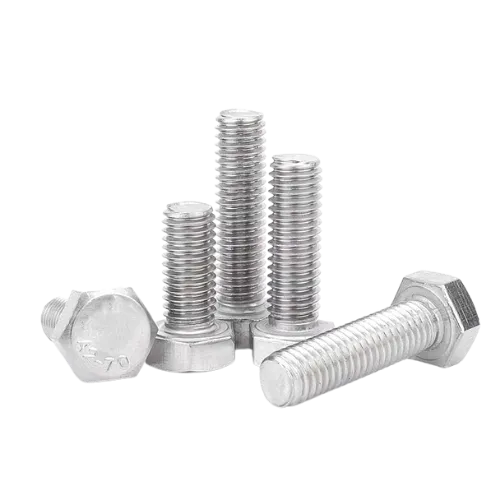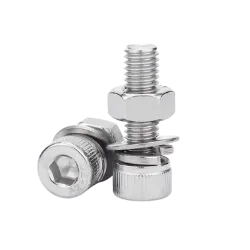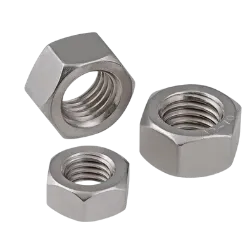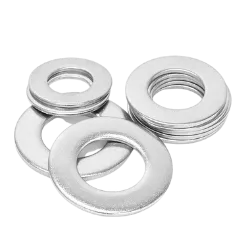Stainless Steel M6 Bolts
Stainless Steel M6 Bolts have a diameter of 6mm and a thread pitch of 1.0mm, according to DIN 931 standard, the thread length is 18MM half-threaded (partial thread) stainless steel bolts.
This type of stainless steel hexagonal bolt is suitable for some smaller fastener occasions, such as furniture assembly, electronic equipment, and so on. It is characterized by simple structure, easy installation, and a wide range of applications.
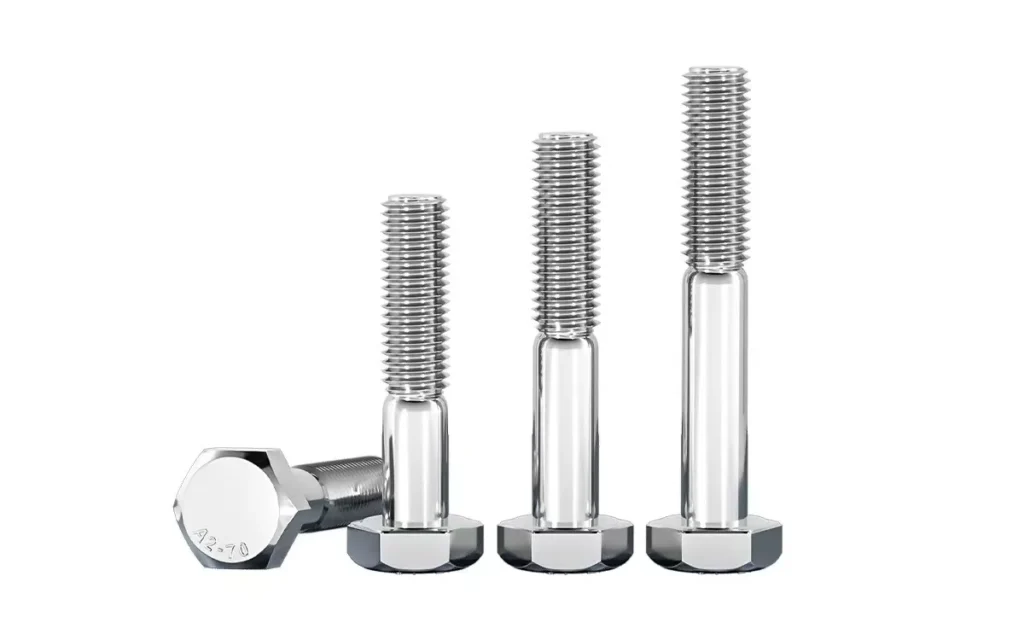
M6 Stainless Bolts Supplier
- Ding Fasteners
- N0.52 Qinfen Rd, Haiyan Zhejiang China
- [email protected]
- 0086-13819377033
- Walter Chou
Thread Length of Stainless Steel M6 Bolts
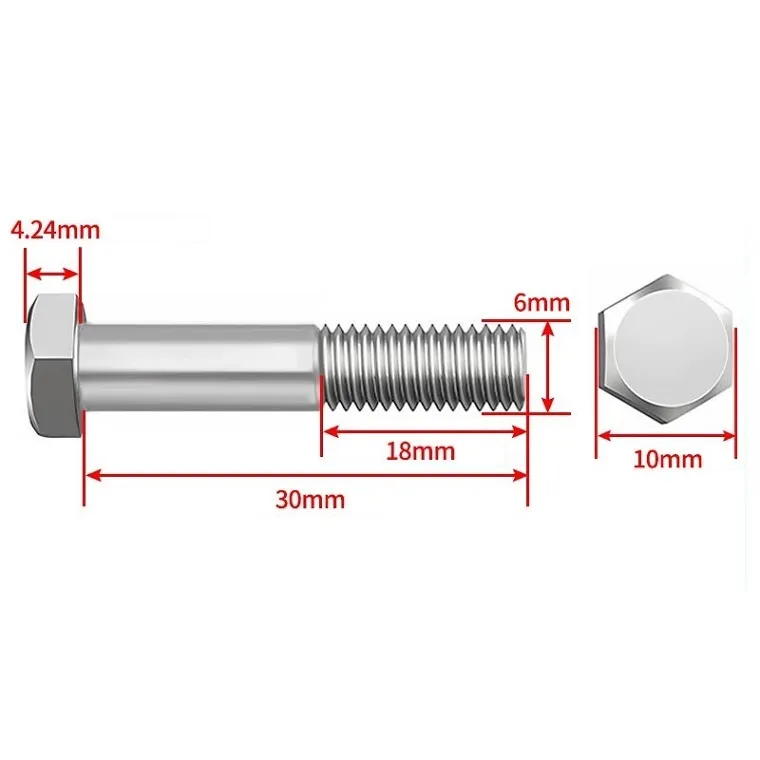
M6X30MM DIN 931 Bolts
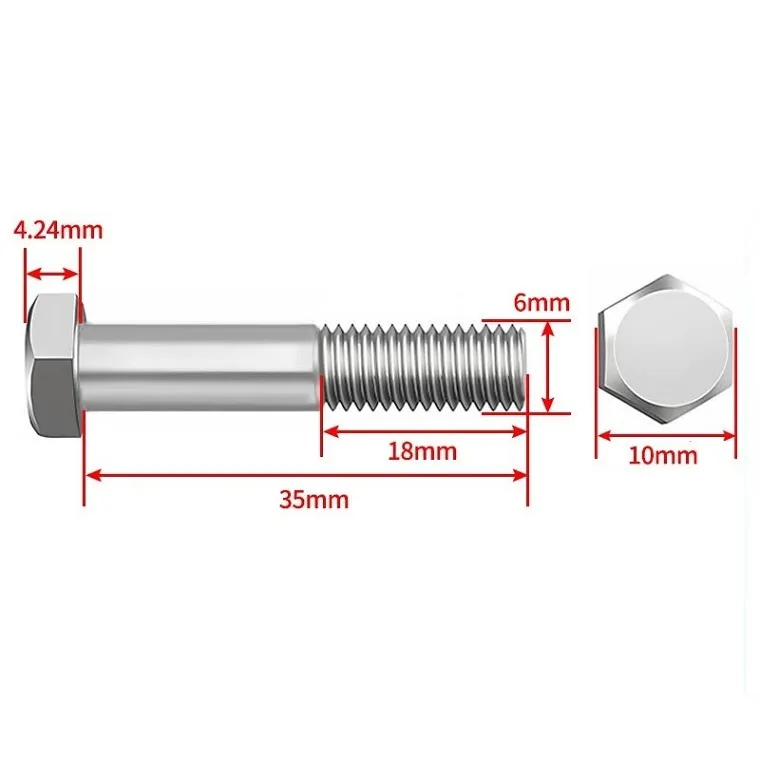
M6X35MM DIN 931 Bolts
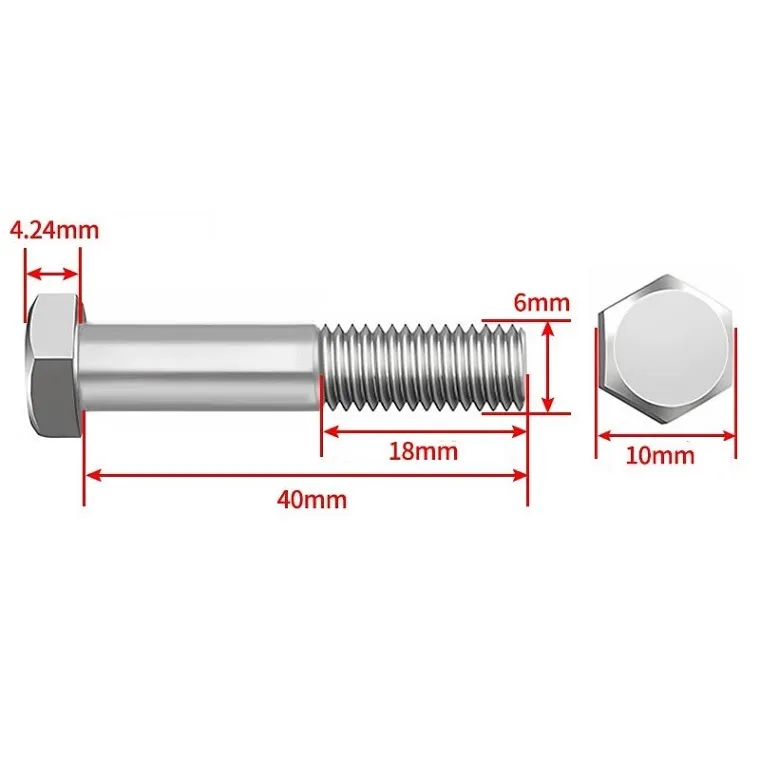
M6X40MM DIN 931 Bolts
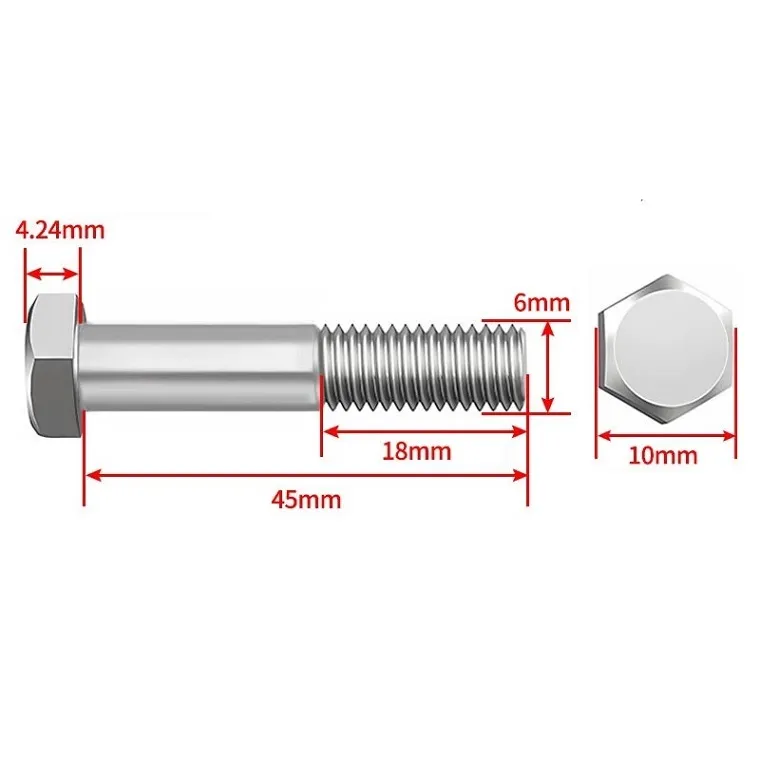
M6X45MM DIN 931 Bolts
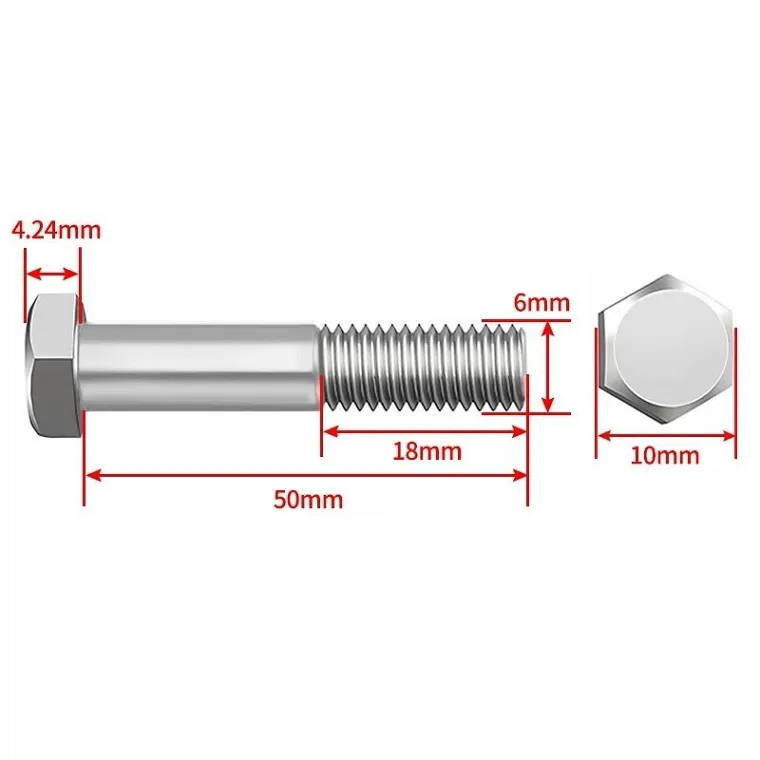
M6X50MM DIN 931 Bolts
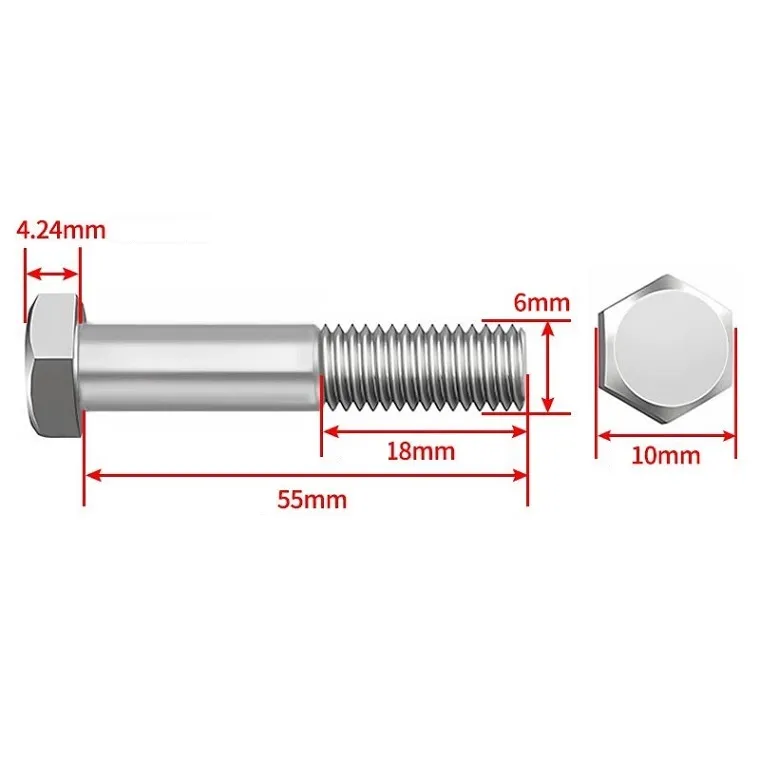
M6X55MM DIN 931 Bolts
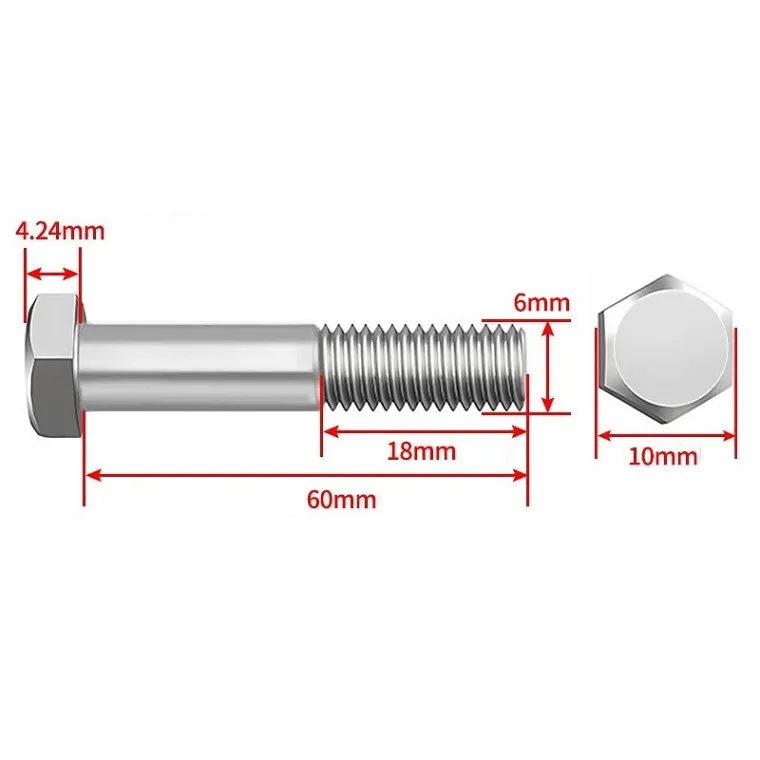
M6X60MM DIN 931 Bolts
Tensile Strength of 304 Stainless Steel M6 Bolts
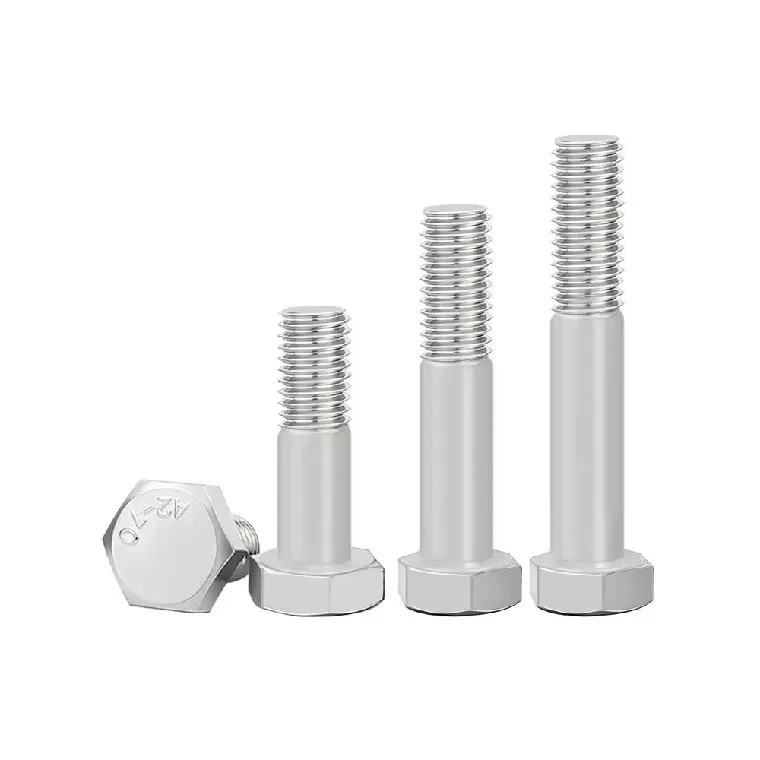
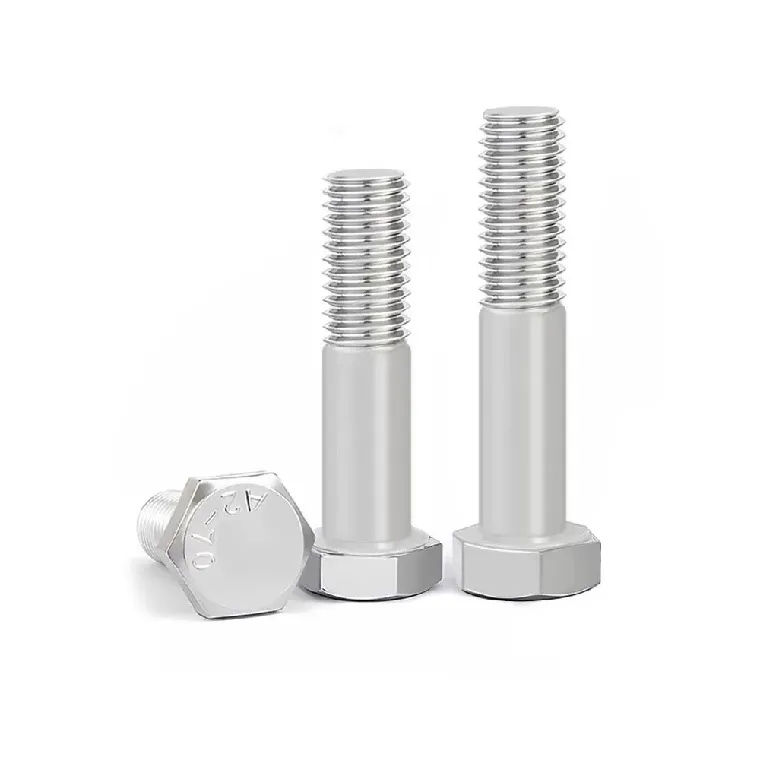
304 Stainless Steel M6 Bolts are common stainless steel material, widely used in various occasions. And M6 diameter stainless steel M6 bolts are also common connecting elements in machinery manufacturing, construction engineering and other fields.
First of all, stainless steel 304 material has excellent corrosion resistance and can be used for a long time in harsh environments without rusting.
Therefore, choosing M6 diameter bolts made of stainless steel 304 material can effectively extend the service life and reduce the cost of repair and replacement.
Secondly, the tensile strength of 304 stainless steel M6 bolts diameter refers to the maximum load that can be withstood under tension.
According to ISO898-1, the tensile strength of 304 stainless steel M6 diameter bolts should not be less than 500 Mpa, which means that the bolts can withstand a large tensile force to ensure the solidity and reliability of the connectors.
So we commonly use stainless steel M6 bolts in grades A2-50 (>500Mpa) and A2-70 (>700Mpa).
It is important to note that the tensile strength of 304 stainless steel M6 bolts diameter is also affected by other factors, such as the length of the bolt, thread design, material strength and so on.
Therefore, in actual application, suitable bolts should be selected according to the specific situation, and properly installed and used in accordance with relevant standards and specifications.
Advantages of 304 Stainless Steel M6 Bolts
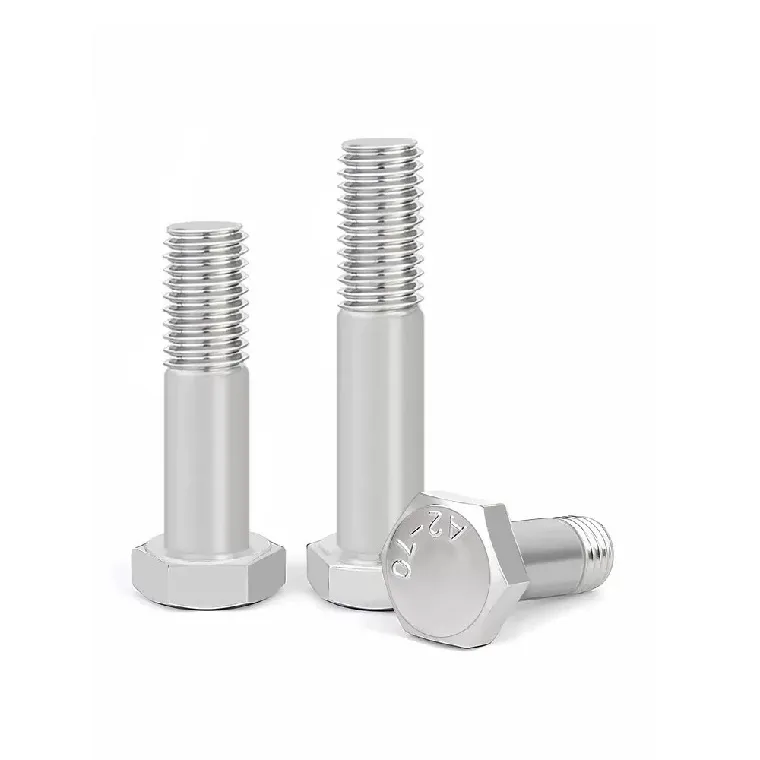
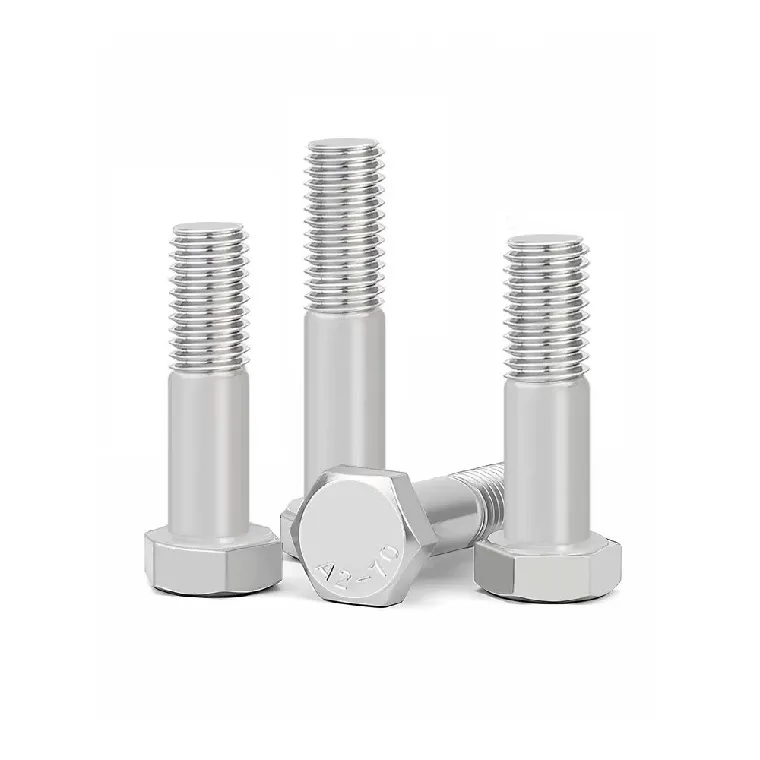
In addition to tensile strength, 304 (A2-70) stainless steel M6 bolts 6MM diameter have other advantages.
Firstly, it has good workability and is suitable for various processing techniques.
Secondly, the surface of the bolt is smooth and flat, which makes it easier to assemble the connectors.
304 stainless steel material also has a certain high temperature resistance, suitable for some special environments.
Tensile strength of 304 stainless steel M6 bolts diameter 6MM is one of the important indicators of bolt performance.
The selection of suitable bolt material and correct installation and use is the key to ensure the reliability of the connectors.
In practical application, the selection should be made according to the specific situation and follow the relevant standards and specifications to ensure that the tensile strength of the bolt meets the expected requirements.
Through the rational use of 304 stainless steel M6 bolts, we can improve the reliability of the connectors, extend the service life, and provide strong support for the development of various industries.
Stainless Steel Bolts Torque
When using stainless steel bolts, the correct torque standard can ensure the tightness of the bolt and bring better use.
Different specifications and materials of bolts corresponding to the torque standard is also different.
The following are some common stainless steel bolt torque standards:
- M5 thread stainless steel bolt torque standard is 2.5 ~ 3.5Nm;
- 6MM thread stainless steel M6 bolts torque standard for 5.5 ~ 7Nm;
- M8 threaded stainless steel bolt torque standard for 15 ~ 20Nm;
- M10 threaded stainless steel bolt torque standard for 25 ~ 35Nm;
M12 thread stainless steel bolt torque standard 40 ~ 50Nm.
Note: The above torque standard is for reference only, should be based on specific bolt specifications and materials to select the appropriate torque value.
If the selection is not appropriate, it will lead to the bolt too tight or too loose, affecting the use of the effect or even cause safety hazards.
Stainless Steel M6 Bolts Use Precautions
- according to the bolt specifications and materials to select the appropriate torque value, not arbitrary use of torque wrenches, especially in the installation of large equipment should pay special attention;
- not to use mechanical force fierce, an increase in the torque process can not change the direction of rotation of the screw head, so as not to destroy the thread when the hair force is too large;
- the use of screw head should be in line with the standard, can not cut corners and use inferior products;
- in the stainless steel bolts connected to the contact surface needs to be padded with flat washers and use the correct bolt specifications and materials, otherwise it will affect the reliability of the connection;
over-tightening is strictly prohibited, should be operated according to the torque standard, so as to avoid plastic deformation of the bolt connection or other accidents;
- the use of stainless steel bolts should be careful to avoid localized corrosion of the bolt connection;
regularly check the tightening of stainless steel bolt connections, and tighten or replace as needed.
The correct use of stainless steel bolts, and reasonable selection of torque standards, can bring better use and higher safety. I hope that this article will enable you to be more cautious in the use process, pay attention to details, and ensure the tightness of the bolt and the reliability of the connection.
Contact the Experts
- Ding Fasteners
- N0.52 Qinfen Rd, Haiyan Zhejiang China
- [email protected]
- +86-573-86221432

